About plastic waste collection
Updated: December 4, 2024
Plastic waste collection volume results
This is the actual amount of plastic waste collected, which began to be collected in April 2023.
| Collection month | Collection results for fiscal year 2024 | Collection results for fiscal year 2023 | YoY change |
|---|---|---|---|
| April | 96.32t | 56.13t | +40.19t |
| May | 83.76t | 75.47t | + 8.29t |
| June | 70.28t | 72.47t | - 2.19t |
| July | 76.91t | 69.87t | + 7.04t |
| August | 77.84t | 74.78t | + 3.06t |
| September | 70.83t | 70.48t | + 0.35t |
| October | 77.11t | 73.91t | + 3.20t |
| November | 76.05t | 70.58t | + 5.47t |
| December | ― | 71.98t | ― |
| January | ― | 77.20t | ― |
| February | ― | 72.72t | ― |
| March | ― | 65.22t | ― |
| total | 629.1t | 850.81t | ― |
As a new item, the separation of plastic waste, glass, and ceramics has started, and as a result of the efforts of garbage separation, the amount of combustible garbage and non-burnable garbage has decreased.
Let's continue to promote waste recycling.
Plastic waste that can be collected in the city
- Within 50cm (transparent, translucent, colored also available)
- everything is made of plastic
- Something clean and free of dirt
Only those that meet all of these criteria are accepted.
Please use the designated blue plastic waste collection bags and put them out in front of your home if you live in a detached house, or at a collection point if you live in an apartment building.
[Container and Packaging Recycling Association Inappropriate Item Inspection]
Under the initiative of the Containers and Packaging Recycling Association, as a result of inspecting plastic waste before recycling (the final process), some waste was found to be unsuitable for plastic waste.
This garbage is judged to be unsuitable and becomes a factor that hinders recycling processing.
From now on, please be careful not to accidentally put it in plastic garbage.

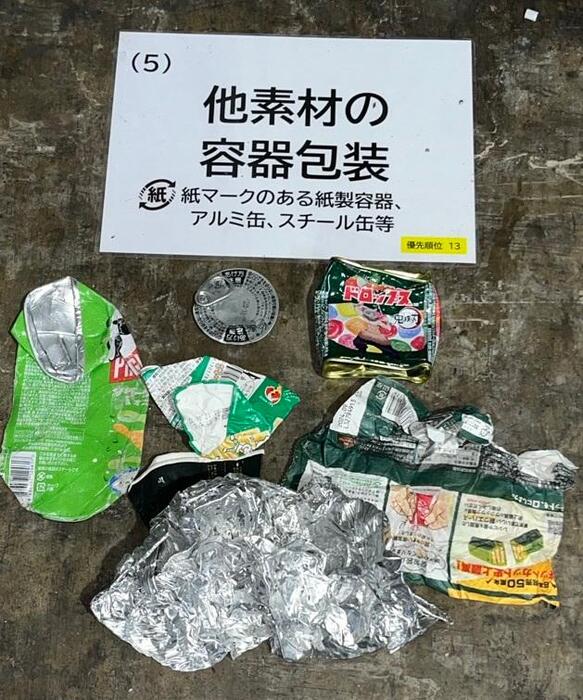
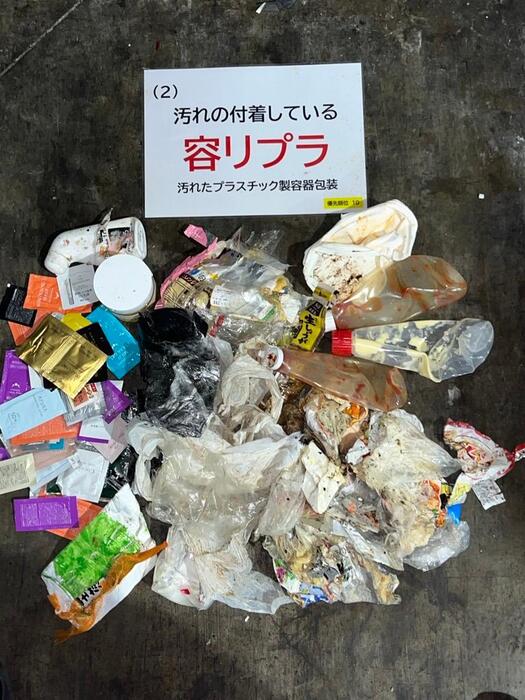
As a result of the inspection, it seems that much of the plastic waste discharged from Inagi City still has dirt remaining.
Dirty plastics are a hindrance to recycling, and only clean plastics are suitable for recycling.
If there are any items left inside or items that cannot be cleaned, please separate them into combustible and non-burnable garbage as usual.
●Dirty Soft plastics that cannot be removed → Burnable garbage as before <br id="3"/>Examples: Mayonnaise and ginger tubes with remaining contents, natto trays, refill pouches for detergent and shampoo, etc. Such
●Dirty, hard plastic → Non-burnable garbage <br id="7"/>Example: Plastic flower pots that cannot be cleaned with dirt, cosmetic bottles whose contents cannot be washed, etc.
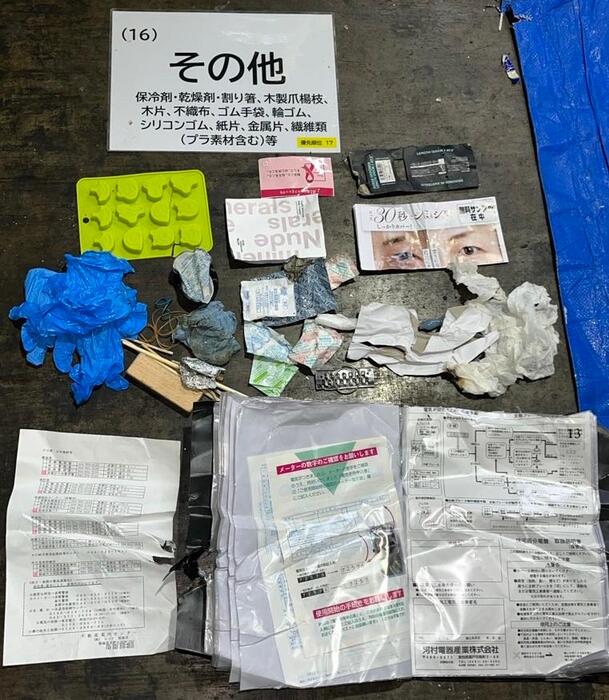
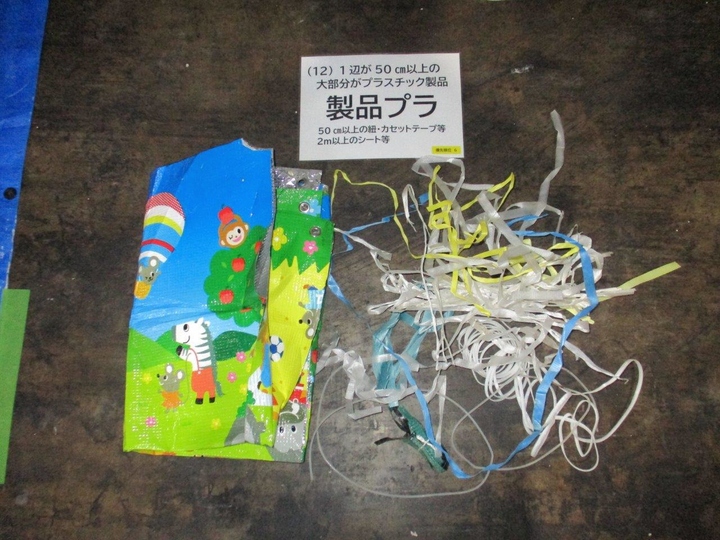
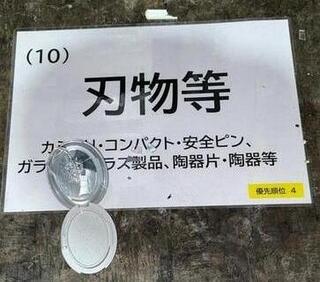
Never put mirrors, compacts, or glass inside.
[Inappropriate items during inspection]
- PET bottles → cans/PET bottles
- Paper cup noodle containers, paper waste, aluminum foil → Burnable garbage
- Dirty plastic waste (mayonnaise containers, wasabi tubes, ointment tubes, etc.) → Burnable waste
- Empty cans → cans/plastic bottles
- Rubber gloves, rubber ice packs → Non-burnable garbage
- Thin cloth products → Burnable garbage
- Rubber band → Burnable garbage
- Plastic file with contents (paper) still inside → Burnable garbage
- Plastic products over 50cm → bulky garbage
- Compact mirror → Non-burnable garbage (Basically, most mirrors cannot be removed, so please never put them in plastic garbage.)
★Uncontaminated PP bands (plastic strings) or plastic sheets that are longer than 50 cm may be cut into pieces less than 50 cm and disposed of as plastic garbage.
[Intermediate processor unsuitable material inspection]
After the collection started, an intermediate processing company inspected the plastic waste.
Inappropriate items were discovered during post-collection processing. Please be careful when discharging.
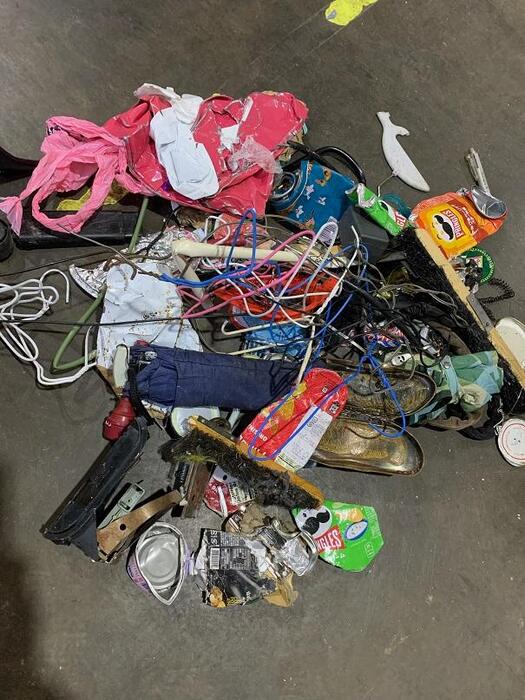
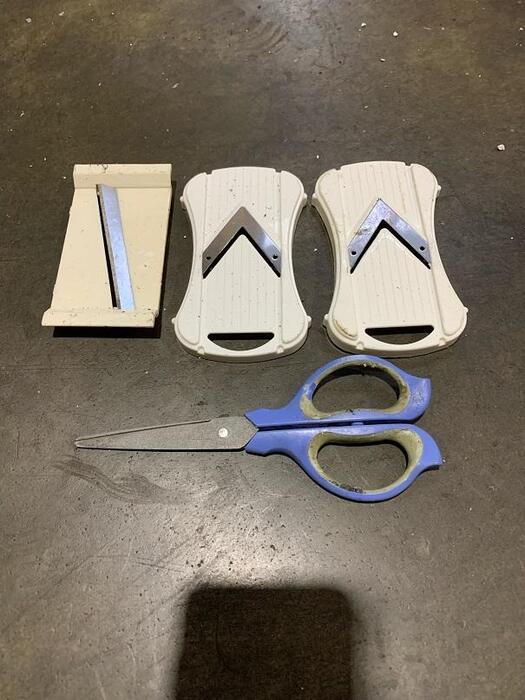
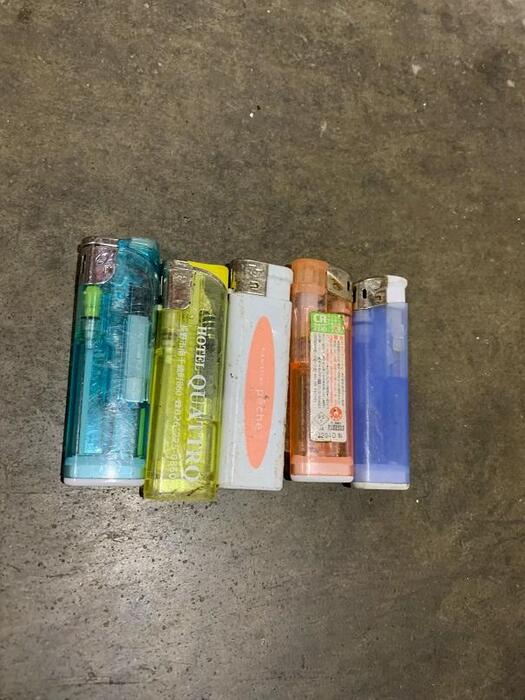

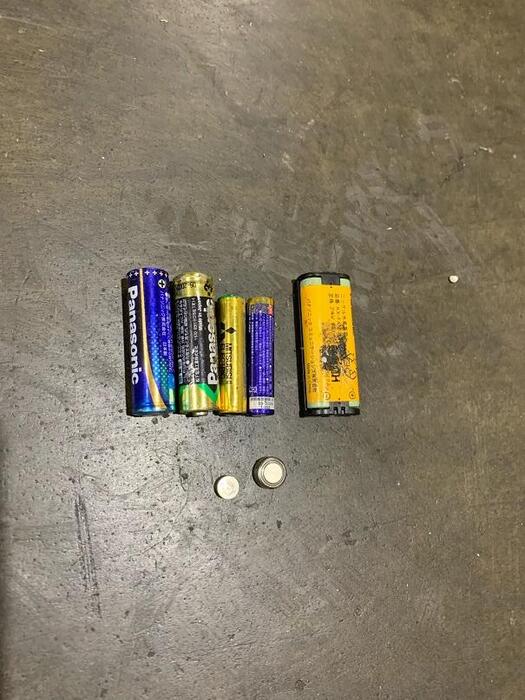
[Inappropriate items in the photo]
- Empty beverage cans, empty canned goods, plastic bottles → cans and plastic bottles
- Tubular snack food containers made of paper → Burnable garbage
- Deck brush brush parts that contain wood → Burnable garbage
- Deck brush (if the length is 50cm or more including the handle) → Oversized garbage
- Umbrella → non-burnable garbage
- Spray cans, lighters → hazardous materials
- Plastic hangers that contain metal in part, hangers that are made of metal only → Non-burnable garbage
- Scissors (if more than 70% are metal) → Metal object
- Slicer with a metal blade → (Please put tape etc. on the blade part) Non-burnable garbage
- Laptop battery → (please put tape on the terminals) Hazardous materials or small electronic device collection boxes installed in public facilities, etc.
- Batteries → (insulate with tape etc.) Harmful materials
Do not mix plastic waste with other waste.
If foreign matter gets mixed with resources, recycling will be hindered.
Currently, three stages of checks are being carried out to prevent the contamination of foreign substances.
First stage: When citizens donate resources
Second stage: When collecting resources Third stage: When sorting at the processing facility
In particular , the first stage of checking when distributing resources produces a great effect.
Separate resources and garbage correctly to use resources effectively!
Inquiries regarding this page
Inagi City Urban Environment Development Department Living Environment Division
2111 Higashi-Naganuma, Inagi City
Phone: 042-378-2111 Fax: 042-377-4781







